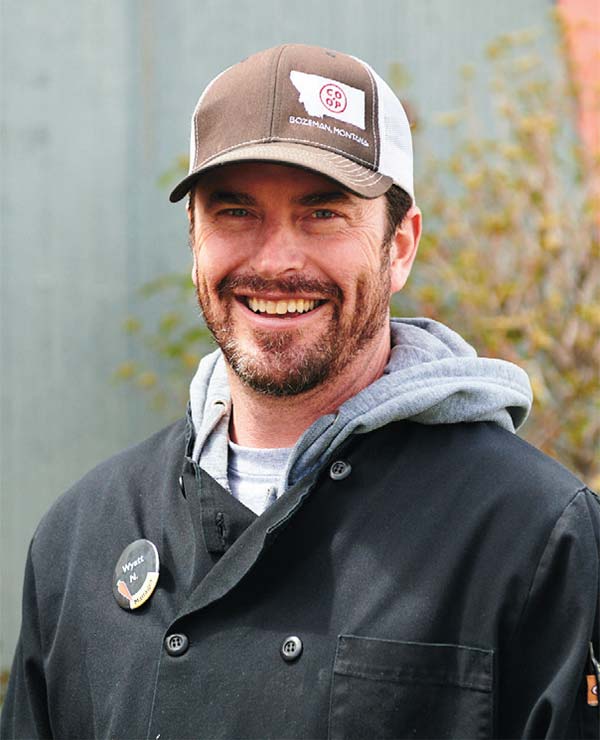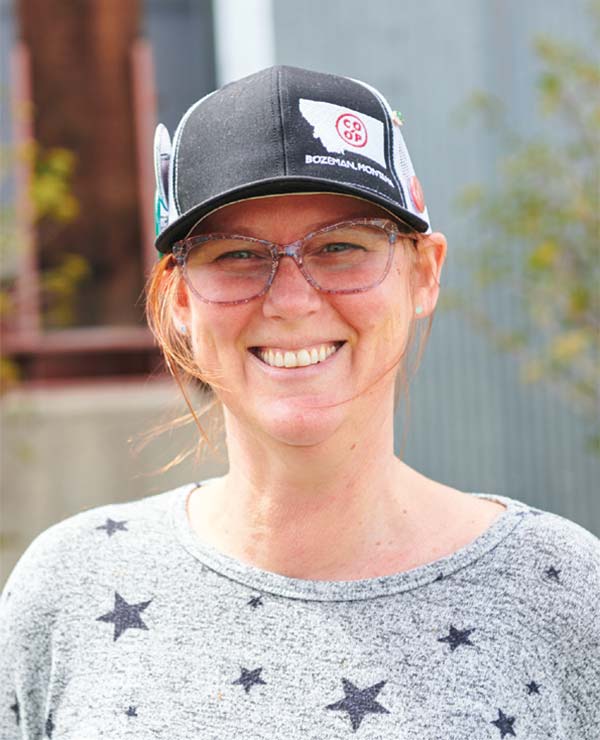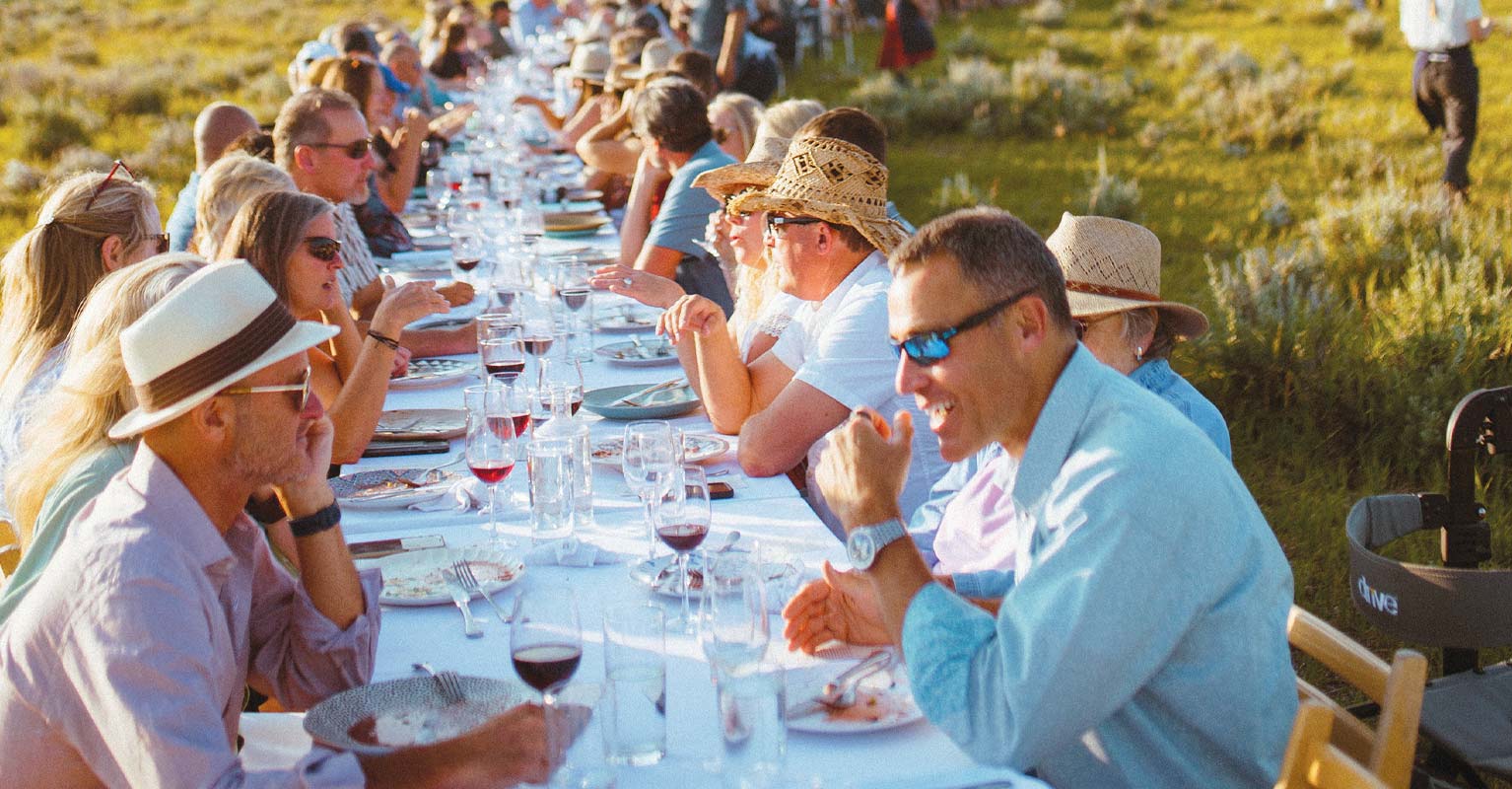Photo by Kene Sperry
Bozeman’s Cooperative Grocery Store
I stood outside Bozeman’s Community Food Co-op on West Main Street on a drizzly Sunday morning in April, waiting for my grocery store tour guide. I had been shopping at the Co-op for nearly fifteen years but I wanted a new perspective. My guide, Atticus Zeitner, showed up in bright blue corduroys, a red and black flannel, and purple high-top sneakers. Atticus had been a Co-op customer for five years because he’s, well, five years old.
We ran inside to see his favorite items: watermelon, broccoli, cheese, and tomatoes. Watching Atticus get excited about local items like honey and the bright, fresh produce made me appreciate our community grocery store even more. The Coop has been a trusted source of local food and community—a place where you can run into your neighbors, or inquire about the local beef—for decades. It was the community aspect that I wanted to learn more about.
The Co-op began in 1979 in a tiny house on Wallace Avenue, started by a group of like-minded people wanting better access to local and organic food. While organic food can now be found in nearly every major grocery store, in the 1970s the term “organic” was still relatively unknown. But this small group was determined to source healthy, sustainable food and to maintain democratic control. That meant they wanted to make decisions collectively and not compromise on the values they shared. Thus began Bozeman’s first food cooperative.
In the simplest terms, a cooperative—co-op for short—is a member-owned and -run enterprise. Cooperatives can be grocery stores, but they can also be health clinics, credit unions, and so much more. While varied in services offered, cooperatives strictly follow a democratic one-member, one-vote model.
Kelly Wiseman, general manager of the food co-op, says that a cooperative is a successful business model because it is a for-profit business with democratic values. Anyone wishing to become a member pays a one-time fee and receives in-store coupons, profit sharing, and voting rights to elect business leadership. Regardless of income, no one has more than one vote. “The profit gets put back into the business and into the community.”
Wiseman has worked at the Co-op since 1986, starting out as a volunteer cashier and working his way up to general manager. He takes his role seriously, ensuring that his staff and community are taken care of.
Lori Petermann, the prepared foods manager, moved to Bozeman fourteen years ago and didn’t know a soul. She took a job at the Co-op in the deli and quickly found her community. Her love of food and experience as a chef prepared her to oversee the deli, salad bar, and packaged prepared foods, and to craft each day’s menu with predominantly local ingredients. Petermann says that the co-op model allows her to work closely with local farmers and ranchers because that’s what the members want. Instead of always having to work with a third-party vendor, oftentimes she can call up places like Gallatin Valley Botanical or Kimm’s Potatoes and establish a relationship.
“We work with growers in advance of the growing season to give them estimates of what we think we will be using in a given year,” she says. “We discuss pricing that works for both the farmers and the Co-op.” Petermann works diligently to ensure that every bit of food that comes from a farmer is utilized. They make their own pesto from local basil and freeze local tomatoes for salsas, enchiladas, and lasagna sauces. They do the same with local winter squash, carrots, and roasted green chilis, significantly extending the life of our short growing season’s harvest.
The evolution and expansion of the meat and seafood counter is another example of the Co-op responding to the requests of its community. Wyatt Nelson, meat and seafood manager, started at the grocery store ten years ago as a sales clerk. He has been “obsessed with food,” from his high-school days working for a butcher to studying food while traveling the world. Once at the Co-op, he began researching how to improve the meat and seafood department. He called up ranchers he wanted to buy from and asked about their animals.
Anyone who talks to Nelson learns that he has equal commitment to the farmers and ranchers, his community, and the environment. Maintaining focus on all three requires constant checks and balances. “Yes, we may be able to get an item locally,” he says, “but is it sustainable? Do they pay their staff a living wage?” Nelson says that working for a co-op allows him a level of quality control he would not otherwise have, made possible by knowing his ranchers personally. “We can have lunch together; I can visit their farm. My ability to pay a fair price for their product is better, which in turn allows the farmers and ranchers to pay their employees fair wages.”
One of those ranchers is Jenny Kahrl. Kahrl has been raising cattle in Montana for over thirty years. Near the town of Pony, less than an hour from Bozeman, Kahrl owns and manages Montana Red Devon. Her heritage-breed cattle are grass-fed and roam freely, leaving very minimal impact on the land. Normally, most cattle are live-hauled out of Montana to be grainfed before going to butcher, which is hard on the environment and the animals. Kahrl wanted to do something different.
“You either send them off thousands of miles away to a system that poisons the environment with fertilizers, herbicides, and petroleum products,” Kahrl explains, “or you raise them at home in a pasture-based system that honors the need of a natural environment.” She chatted with Nelson about her desire to keep her male calves in-state, but there were not enough buyers. Nelson, not one to take no for an answer, was determined to find a solution that was mutually beneficial. Together they developed the “young beef program,” which allows the calves to stay on Kahrl’s ranch to feed on the nutritious land, and then be hauled to a nearby processor, delivered to the Co-op, and then sold to the community.
Over the years, the Co-op has evolved with the Bozeman community. It has increased the size of its main store, added an off-site bakery, opened a new store downtown, and bolstered its relationships and programs that impact the community. For example, the Co-op donates 10 cents from the sale of every apple to a diff erent local nonprofi t each month through the Apple- a-Day program, raising $25,000 in 2020 alone. The Co-op also works with Happy Trash Can, a residential and commercial composting service. Since 2016 they have diverted 250,000 gallons of kitchen and consumer waste away from the landfill and into compost for local gardeners and farmers.
The co-op model takes time and effort, but it’s worth the investment. Investing in farmers and ranchers means high-quality, environmentally conscious products at the store; investing in the community means better quality of life.
As I chased Atticus around the Co-op on that Sunday morning, I took time to stop and smell the coff ee beans and marvel at the sight of fresh salmon. He sat down to take a break in the middle of the produce section so I sat with him and told him about the story I was writing, about local food, and a community-owned grocery store. I asked him why he thought it was a good idea to buy local food. He thought for a moment, fidgeting with the laces on his purple sneakers, and then told me, “Because the farmers have to sell their food, and we have to eat!” It doesn’t get much simpler than that.







